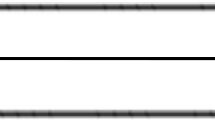Abstract
Boron carbide is widely used as industrial material, because of its extreme hardness, and as a neutron absorber. As part of a round-robin exercise leading to certification of a new reference material (ERM-ED102) which was demanded by the industry we analysed nitrogen in boron carbide by inert gas fusion analysis (GFA) and instrumental photon activation analysis (IPAA) using the 14N(γ,n)13N nuclear reaction. The latter approach is the only non-destructive method among all the methods applied. By using photons with energy below the threshold of the 12C(γ,n)11C reaction, we hindered activation of matrix and other impurities. A recently installed beam with a very low lateral activating flux gradient enabled us to homogeneously activate sample masses of approximately 1 g. Taking extra precautions, i.e. self-absorption correction and deconvolution of the complex decay curves, we calculated a nitrogen concentration of 2260 ± 100 μg g−1, which is in good agreement with our GFA value of 2303 ± 64 μg g−1. The values are the second and third highest of a rather atypical (non-S-shape) distribution of data of 14 round-robin participants. It is of utmost importance for the certification process that our IPAA value is the only one not produced by inert gas fusion analysis and, therefore, the only one which is not affected by a possible incomplete release of nitrogen from high-melting boron carbide.

Twin-Detector system for analyzing spatially extended samples


Similar content being viewed by others
References
Engelmann C, Kraft G, Pauwels J (1985) Modern methods for the determination of non-metals in non-ferrous metals. Walter de Gruyter, Berlin
Grallath E (1980) Fresenius Z Anal Chem 300:97–106
Gruner W (2002) Erzmetall 55:151–157
Meyers P (1968) Eur Comm Rpt EUR-3896-3896 d-f-e:195–224
Pauwels J (1979) Berichte der Tagung in Darmstadt (1979) Veranstaltet vom Gemeinschaftsausschuß “Gase in Metallen” der Deutschen Gesellschaft für Metallkunde e.V. und der GDMB Gesellschaft Deutscher Metallhütten und Bergleute e.V., pp 137–159
Lange B, Kipphardt H, Recknagel S, Meier KA (2002) Accred Qual Assur 7:19–23
Matschat R, Dette A (2004) Final certification report on BAM S-003 silicon carbide powder
Kipphardt H, Dudzus T, Meier KA, Recknagel S, Hedrich M, Matschat R (2002) Mater Trans 43:98–100
Schmitt BF, Dudzus T, Fusban H-U (1981) Mikrochim Acta 1:57–61
Görner W, Berger A, Jost P (1998) J Radioanal Nucl Chem 234:91–94
Görner W, Alber D, Berger A, Haase O, Monse G, Segebade C (2005) J Radioanal Nucl Chem 263:791–796
Berger A, Goerner W, Haase O (2000) J Radioanal Nucl Chem 244:517–522
Segebade C, Weise H-P, Lutz GJ (1988) Photon activation analysis. Walter de Gruyter, Berlin
Görner W, Berger A, Ecker KH, Haase O, Hedrich M, Segebade C, Weidemannn G, Wermann G (2001) J Radioanal Nucl Chem 248:45–52
Stromatt RW, Delvin WL (1978) Experience in the analysis of nuclear-grade boron carbide. Hanford Engineering Development Laboratory Report TME-77-100
Gosgrove GV, Shears EC (1960) Analyst 85:448–449
Acknowledgments
This article is dedicated to Wolf Görner on the occasion of his 65th birthday. We thank Oskar Haase for providing the high-energy photon beam, Christian Rauch for assistance with the measurements, and Thomas Dudzus, Heinrich Kipphardt, and Peter Barth for discussing determinations of light elements. Three anonymous referees helped to substantially improve the quality of this paper.
Author information
Authors and Affiliations
Corresponding author
Rights and permissions
About this article
Cite this article
Merchel, S., Berger, A. Determination of nitrogen in boron carbide by instrumental photon activation analysis. Anal Bioanal Chem 388, 385–389 (2007). https://doi.org/10.1007/s00216-007-1217-z
Received:
Revised:
Accepted:
Published:
Issue Date:
DOI: https://doi.org/10.1007/s00216-007-1217-z




